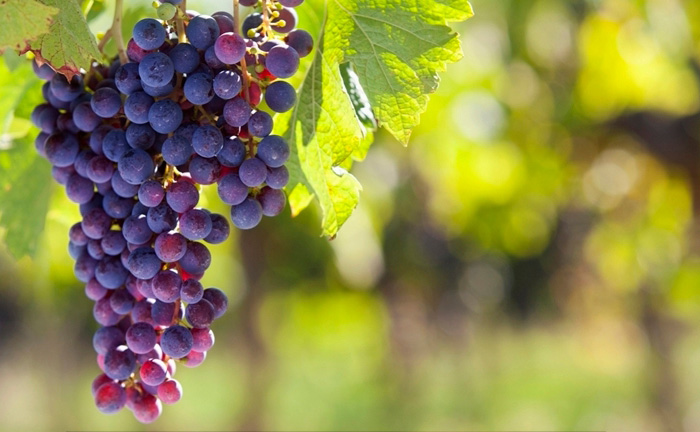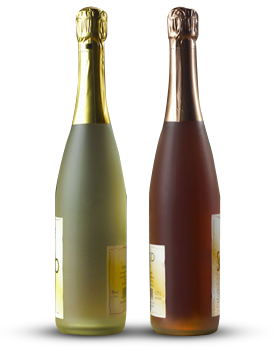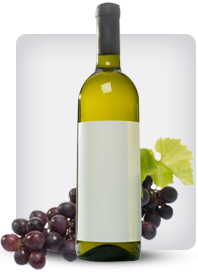

Tag: Wine
Six Basic Steps to Make Wine
Posted onDo You Know the Basic Steps to Make Wine? These Winemaking Instructions will Test Your Wine Savvy
All wines are made differently, where the winemaking process is easily adapted to the different grape cultivars that exist. While the process of making wine is one and only, there are many variations that you can apply to better suit the style of wine you wish to brew, and the type of grape varietal that you’ve harvested for your winemaking.
Below you will find the basic wine making steps and instructions to achieving a delicious bottle of wine. You can follow this to the t, or tweak it in your best knowledge to improve the quality and taste of your resulting brew.
1) Sanitization
Alike other processes of food and beverage production, all materials and consumables must be ridded of bacteria and natural yeasts, which can alter or throw off the quality and flavor of your wine. To eliminate harmful microorganisms successfully, use cold water to wash your produce and allow to air dry. Next, prepare a solution made of 5 crushed Campden tablets, in half a gallon of water. Cover al surfaces with the mixed solution, let act for ten minutes and rinse. Allow surfaces to air-dry thoroughly before you begin using your workstation.
2) Crushing
In winemaking, crushing is done to create a must (liquid and solids) out of the grapes. While crushing is generally achieved with the use of a crushing grate, it used to be traditionally done by feet stomping. Nowadays, tools like crushing grates or wooden paddles allow us to obtain the same result, with much less space and physical effort.
For white wines, grapes that are crushed must then be separated from their skins, stems and seeds (also called lees) in order to prevent the extraction of color into the juice and wine-to-be. For red wines, the lees are left in the must to incorporate tannins (the pigment responsible for red wine color) into the brew.
3) Preparing a Starting Liquid
In order to have an efficient fermentation process, you must make a starting liquid with the wine making yeast that you have chosen. To prepare a starting liquid, allow 24hrs for yeast to wake. Mix yeast, with a jug of lukewarm water and sugar. Cover and let sit for a day. In the meantime, place the must and/or grape juice in a primary fermentor; mix in 4 crushed camped tablets and cover. . If desired, incorporate two crushed Campden tablets to rid your crushed grapes of any bacteria or unwanted yeasts from interfering with the wine fermentation.
4) Fermenting
Once your starting liquid has rested for a day, you’ll see foam forming at the top. Incorporate the liquid to the primary fermentor along with the must (for red wines) and/or grape juice (for white wines). A yeast nutrient can also be added at this point. Top container off with water up to the 5.5gal mark. Do not mix or stir. Cover.
5) Fermenting II
After 2 days have elapsed, you must now mix in the fermenting liquid twice a day. Do this until a week of fermentation is complete, or modify this step according to the type of wine that you are making. Alterations will include temperature conditions, length of fermentation and other details in the process.
6) Racking
Once the grape juice has been made into wine via fermentation, you are now ready to rack the wine and eliminate sediments. If you are making re wine, make sure to remove the pomace (or left over seeds, stems and skins) that float on the surface of the fermentor. Extract any retained juice by using a mesh bag to squeeze the liquid through. Using a hose, siphon the wine into a carboy, making sure to leave any sediment in the bottom of the primary fermentor.
Top off carboy with water if necessary (up to measured line), and set up a moistened airlock to prevent the intrusion of oxygen in the wine. Allow the wine to sit for 4 weeks, and do a second racking to eliminate other sediments that could remain in the wine. A third racking might be necessary for heavily-sedimented red wines, or if you wish to clarify your wine further. Clarifying agents can also be used to eliminate the need for a third racking, yet many winemakers recommend doing this to achieve a smooth, nicely bodied wine.
Following the racking, you’ll bottle and age. Make sure to adapt the aging process to the style of wine that you wish to make. To your winemaking success!
More Malbec Wine Articles
White Wine – Ultimate Sophistication
Posted onThe ultimate in sophistication and class in the world of wine would be the white wine. It is so versatile because of all the varieties and styles is comes in. White wine can be paired with just about any food you can imagine. Whites can be sweet, dry or even semi-sweet. They are easy to recognize because of their light yellow or almost clear coloring. White varietals are grown all over the world with the most famous probably being the Chardonnay grape originally from France. However, this grape is just as at home in California and New Zealand. This white wine is renowned for its smoke flavor with a hint of oak. Chardonnay is not the favorite of this author, but that does not diminish its popularity world wide.
A much sweeter contender for favorite white wine worldwide would be the Riesling. Rieslings originate in Germany and by far they make the best, but it has had a slow start in the world of white wine. Unfortunately there are many poor quality sugary substitutes which have given Rieslings a bad name. These substitutes have tarnished the reputation of a very fine wine, but like the nature of all Germans, they do not give up and they quickly overcome. High quality Rieslings hail from the Rhine and Saar valleys and have help to reestablish this wine as one of the finer whites. Varieties in America and Australia have contributed to the good reputation of this grape variety.
A great way to enjoy your favorite whites thoroughly is to pair them with your favorite foods. Cheese is a simple and great way to enjoy your favorite white wine. Mild cheese is best paired with a sweeter white like White Riesling or a Gewurztraminer. Full bodied cheeses pair wonderfully with a Chenin Blanc or a Dry Riesling. Seafood or pastas with cream sauces should be paired with a Chardonnay to enhance flavor while shellfish like lobster, crab, and shrimp pair amazing with a Sauvignon Blanc. Asian foods like Thai pair great with the sweet wines as well, the best being Gerwurztramner. Poultry goes well with any white wine. This may surprise many of you, but chocolate is perfect with a glass of White Riesling. Yummy!
While it may be important to consider what food you will pair with your white wine it is more important to enjoy the wine you are drinking. The number one reason to choose any wine is by if you like it or not. Then when you find one or many you like, you might try to increase your pleasure by pairing it with just the right food. The quality, color, notes and variety all combine to make the best wines in the world, but that is all for naught if you do not like it in the first place and cannot find yourself taking another sip. White wine is considered the ultimate in class because of its versatility. You can drink whites socially, with a meal or while reading a book! You will find the best white wines being drunk during BBQ’s and charity events alike. It is your choice and make it confidently and often.
How to Look Like a Wine Expert
Posted onEver wonder why you see wine connoisseurs stick their noses into their wine glass when the wine steward brings a new bottle of wine to the table? They are “tasting” the wine with their noses.
Believe it or not, your tongue can only taste four things: sweet, salty, sour, and bitter. All the other nuances of taste actually come through a complicated relationship between taste and smell. It is the nose and the nasal passage at the back of the throat that make what we taste in our mouths flavorful.
Inspecting and smelling the cork and sniffing the wine lets the person who ordered the wine evaluate it before putting into his or her mouth. If the wine has been spoiled, these two steps will usually reveal the problem.
Improper wine storage or contamination with certain bacteria can make a wine taste perfectly terrible. You wouldn’t want to put it in your mouth.
After showing you the bottle and removing the cork, the sommelier, or wine steward, will hand you the cork to inspect and sniff. If the cork appears to have deteriorated or smells bad, you should immediately refuse the wine.
If all appears to be well with the cork, the sommelier will pour a small amount of the wine into your glass.
Keep the base of your glass flat on the table and swirl the wine gently around. This mixes air with the wine and vaporizes the complex aromas. Quickly lift the glass and stick your nose into the glass as far as you can and smell the wine.
Some people say that keeping your mouth open while you sniff the wine will help you perceive the full aroma.
When a wine is badly “flawed,” it will often be immediately apparent in it’s “nose,” which is the term wine lovers use for it’s smell. If the nose of the wine is not inviting, and you aren’t immediately tempted to taste it, don’t hesitate to return the bottle to your wine steward. You should immediately be offered a replacement bottle.
Keep in mind that if there are strong scents around you, they can compete with the wine you are evaluating. If you or the person next to you are wearing strong perfume, this can throw off your nose. If there is pungent food being served nearby, this can also affect what you smell in the wine glass.
Once your nose has had first crack at the wine, and the wine has passed the nose test, then take a sip and swirl the wine around in your mouth. Give the sommelier a nod if you approve, and only then will he proceed to serve your chosen wine to your guests at the table.
Related Malbec Wine Articles
Homemade Wine Making Equipment
Posted onIf you’re thinking about making your own homemade wine, here are some things you should know about the equipment required to get you started.
First and foremost, we need to talk about cost. You could visit online merchants here, there and everywhere to shop around for the best prices on individual items you’ll need to start making your own wine, but most sites that sell equipment offer some sort of beginning equipment kit that will have all the items you need to get your wine making career started. This is absolutely the best way to go in my opinion. Kits will run anywhere from $ 80-$ 150. That’s a lot of money, but this equipment can be used over and ever and thus will eventually pay for itself.
So what’s included in a kit, anyway? For starters you’ll get a plastic primary fermentation bucket, usually around 8 gallons. After primary fermentation you’ll need something to transfer your wine into for secondary fermentation. This is usually a 5 or 6 gallon glass bottle, called a carboy, although in some kits the secondary is plastic.
Also included will be some rubber stoppers that fit the fermenting vessels, and an airlock, which is a device used to let carbon dioxide out when your wine is fermenting while not allowing air and bacteria in. You should also get a couple of brushes, one for cleaning the bottles and another so you can clean the carboy.
Some sort of cleaning agent and also a sanitizer will be included. Cleaning and sanitizing is a crucial step when making wine. A length of plastic tubing will be supplied, and a sometimes a device called a racking tube which aids in transferring your wine from one vessel to the other. Some kits also include a little device to slip onto the plastic tube that allows you to shut off the flow of wine when you’re bottling.
Most kits include a hydrometer. This is a device that measures the specific gravity of the wine during various stages of development. You can also use it to measure the potential alcohol of your wine. Corks are also in most equipment kits, as is some sort of corker to insert the corks.
This is the minimum list of items, and you’ll find some kits that include much more. What is generally NOT included is an ingredient kit, although some sellers will allow you to add one to your package for a reduced price and if you can afford it, this is a good way to go. Bottles are usually not included either, but are easy to collect from friends and family.
Consider getting started making your own homemade wine today. It’s a fun and fascinating hobby that you can explore endlessly.
Story of the Perfect Wine Glass
Posted onDrinking wine is always a pleasure but drinking with the perfect wine glasses is always going to make your wine a delight. So here is a guide to choose the perfect wine glass for you.
In the market there are many types of wine glasses of different quality and design. So while you are choosing a bottle of wine make sure that you first seek in the market and decide upon the best plan. However there are a number of manufacturers in the market which offer you excellent wine glasses but they are expensive though and thus are in accordance with the wines.
Besides being the massive amount of glasses available in the market, there are three wine glasses which make the exception. The first in the list is the white wine glass of standard shaped. Try it out with a bottle of champagne and a bowl of red. However there are other recommendations also and make sure that you make the best choice.
The very first thing you should see is the material of which they are made. Make sure that the glass is clean and plain. In order to have the pleasure of the wine watch out for the color of the wine like the age of the wine and the quality of wine. Wine glasses are also made up of frosted or colored glass and the materials made up of silver and pewter are definitely not desirable.
Next, make sure that glasses are of adequate size and that’s why a glass should be of measurable in a way that enough quantity wine could be poured and wine could be swirled in the glass and therefore free the aromas of the wine which is crucially important.
Make sure that it should have a stem so that the wine glass can be held easily without having any oily fingerprints. Also, it helps the wine to be at right temperature. You must be wondering how to do this thing, as you hold the wine glass to be warmed up and keep it cool from the area from which you are holding.
In the last, one of the most crucial aspect is that the shape of the bowl is of sheer importance. A superior wine glass is narrow from the top and it is broader from the bottom. Besides looking good, it has a multifunctional purpose.
popular posts
-

How to Decant Merlot Properly: A Guide to Unlocking Its Full Potential Merlot, with its plush texture and approachable profile of plum, cherry, and chocolate notes, is one of the world’s most beloved red wines
12-22 2025While often enjoyed straight from the bottle, taking the time to decant a Merlot can dramatically elevate the experience. Decanting serves two primary purposes: Read More
-

Pinot Noir Wine Subscription Reviews: A Curated Journey for the Discerning Palate For wine enthusiasts, few grapes inspire as much devotion and discussion as Pinot Noir
12-21 2025Celebrated for its elegance, aromatic complexity, and remarkable ability to express *terroir*, Pinot Noir can be both thrilling and intimidating to explore. This is Read More

